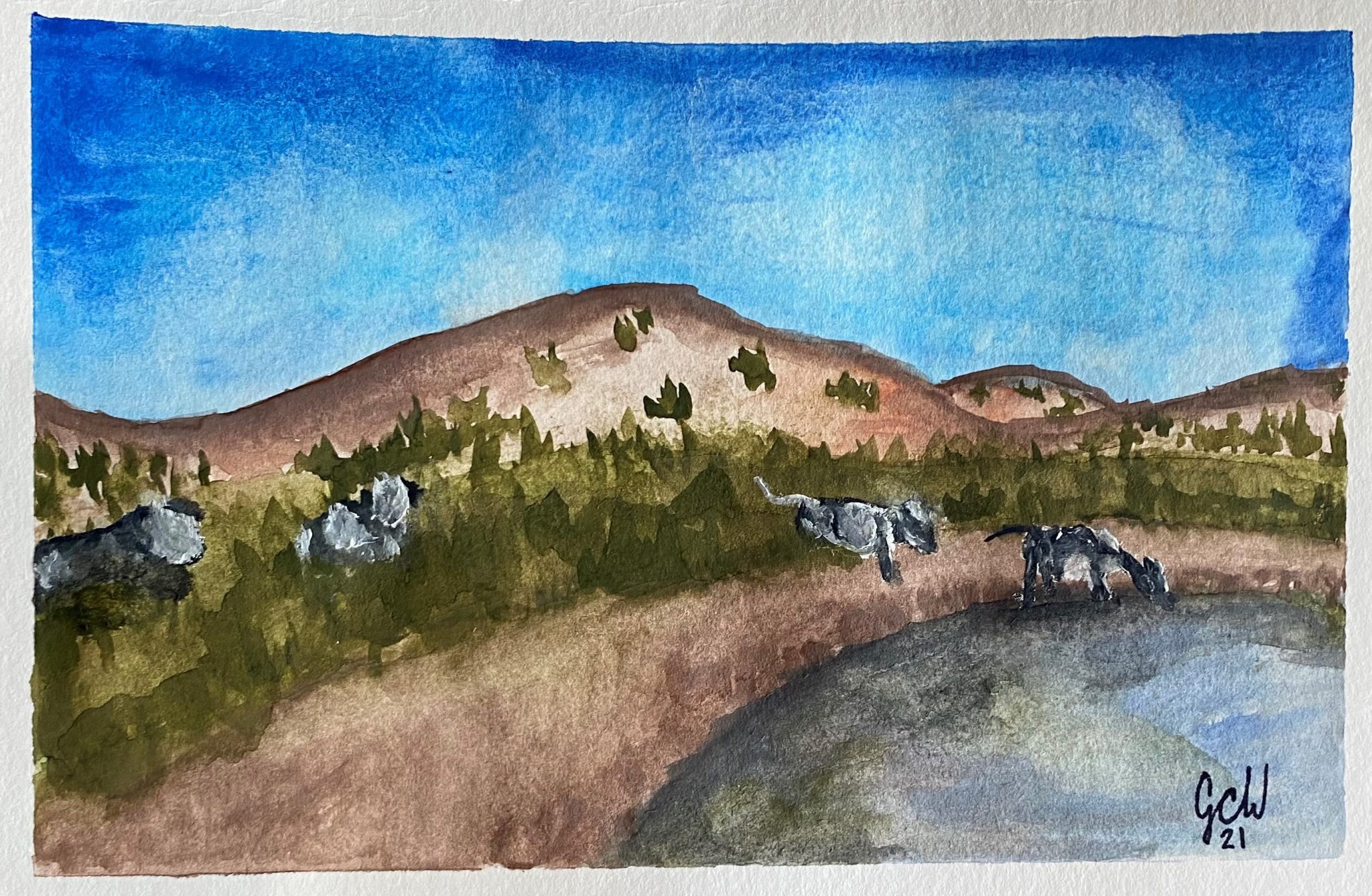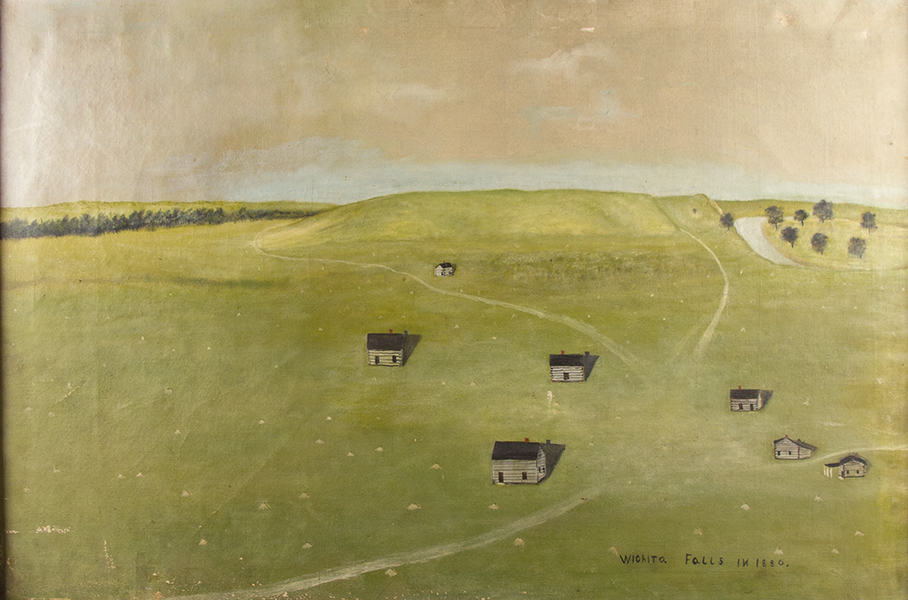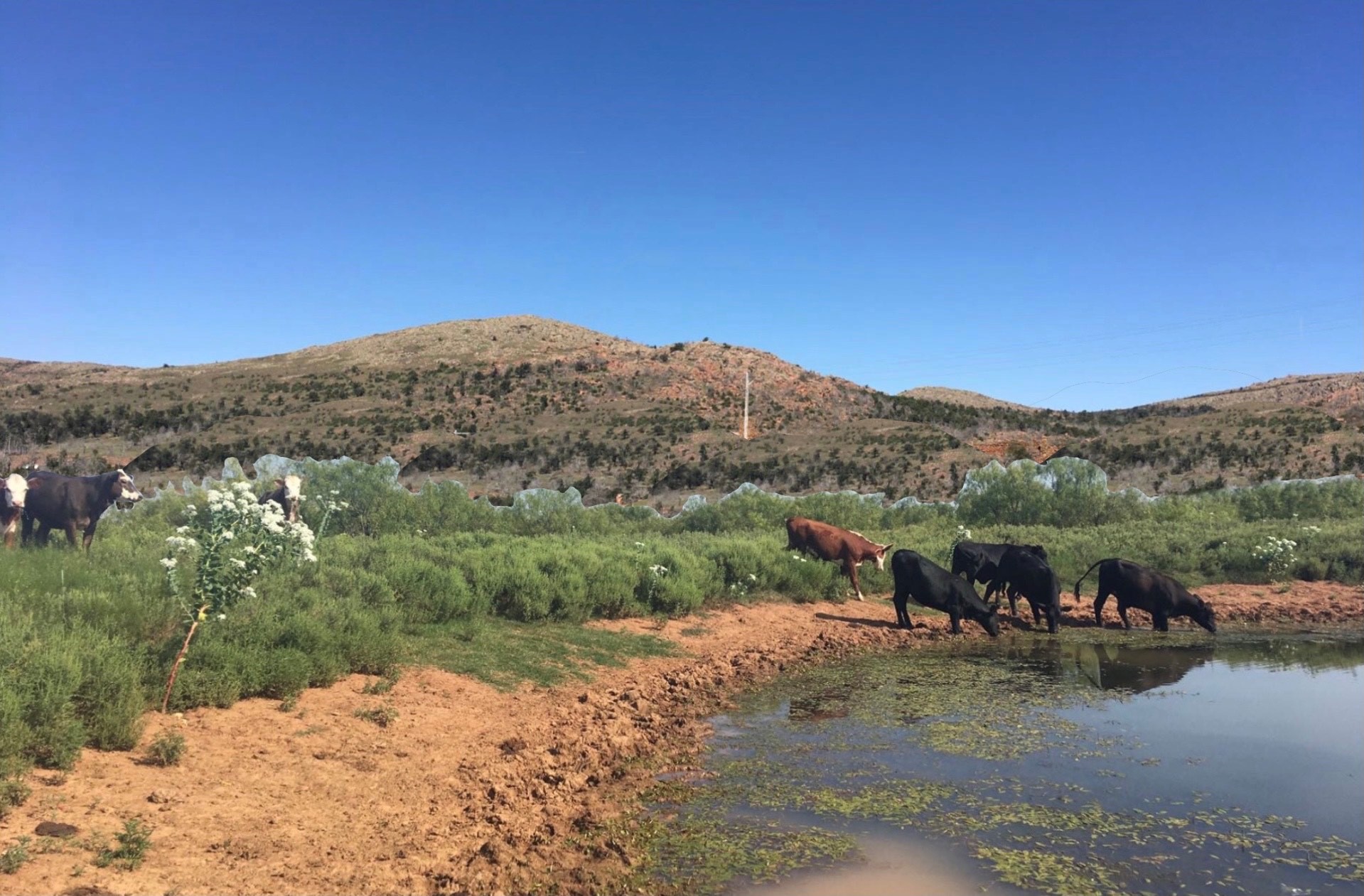Wichita Falls 1882
What would Life be like if you were alive in the Gilded Age?
An "en plein air" project by MSU art education student Grace Weaver

Context and Inspiration
Definition of the Gilded Age
The Gilded Age can be defined as the time after the Civil War from 1870 to the turn of the century when the US population and economy grew rapidly, including the westward expansion and railroad development that would establish the city of Wichita Falls. Looking back on the era from the 1920s, the term Gilded Age was coined from an 1873 novel by Mark Twain and Charles Dudley Warner titled The Gilded Age: A Tale of Today. The word, gilded, means to make something seem more attractive than it is and here alludes not only to actual growth but also to simultaneous realities of struggle and hardship.
Native American History
From the establishment of the Texas Republic in 1836 to its statehood in 1845 and beyond, inhabitants of this land engaged in complex political and economic relationships, often driven by US law. The Indian Appropriations Act of 1871 declared indigenous groups would no longer be considered sovereign nations. By 1887, the Dawes Act or General Allotment Act envisioned Native Americans as individuals rather than as members of tribes, breaking up reservation land and promoting assimilation into the culture of the United States over the next 40 years. Throughout this time, regional tribes retreated or were moved to Oklahoma, known then as Indian Territory. By the 1930s, amid the Great Depression, the Indian Reorganization Act ended the allotment of tribal land and restored the recognition of tribal governments. Regional societies of Kiowa, Comanche, and Wichita, surviving decades of disease, war, and governmental action, reestablished in Oklahoma.
Wichita Falls History
During the Gilded Age, the area of Wichita Falls was carved out from endless nature traversed by Native American tribes, to become a merchant city that would serve northwest Texas and southern Oklahoma. In 1882, the Fort Worth and Denver City railroad reached this land, and on the same day, the first land lots were sold. Photographs of the period show a city full of baseball players, millworkers, farmers, and businessmen. By 1890, the population reached almost 2,000 people, growing to more than 5,000 people in 1907.
Artworks on View
Find inspiration in the current exhibition, Visions of the West. This show is a compilation of artworks that touch on a few of the myriad aspects of the American west, still unfolding today. The artists, spanning the mid-1800s to the present, made art from the lens through which they saw the world, ultimately influenced by time, place, and culture—and by the language of art. Through them we are invited to encounter the experiences of others within the vastness of human life.
Activity Directions

For this activity you will work “en plein air” or out of doors. You may use any art material you wish, from crayons to oil paint. Today we challenge you to venture to a nearby park, take a walk around the block, or simply step into your backyard. Popular places to visit in Wichita Falls are downtown, Sikes Lake, or various parks and walking trails. As you walk or sit, pay attention to the details around you.
First, use the questions below to get into the project and inspire your ideas. If you don’t have an answer, move on to the next question until you find one that grabs you. We’ve included lots of questions to get you thinking about who and where you are.
Then, reflecting on the short history provided here and on any further reading you’ve done, think back to the Gilded Age. Think about how different it would be if you were standing in the same exact spot on September 7, 1882, moments before the Fort Worth and Denver City railroad reached the region now known as Wichita Falls and town lots were sold. Ask yourself the same questions again, this time putting yourself in someone’s place who may have been present just before the railroad reached the area. Using your answers, create art expressing what may be around you if you were standing the same spot in 1882.
Questions to Get Ideas
Personhood
-
Who are you? What do you do for a living?
-
What are you wearing? Is it meant for work or leisure? Is it well loved or brand new?
-
Where do you live? What type of activities do you do in your home? Is it used as a gathering place, workplace, or merely a place of rest?
-
How are you feeling? Are you calm or rushed, happy or sad? Are you worried or stressed? If so, what about?
Senses
-
What do you see? Is it more natural or constructed? Do you see trees, bushes, grass, or only man made items?
-
Do you see or hear insects or animals? Cicadas, crickets, or nearby dogs barking? Or are the sounds you hear created by humans? What are these sounds?
-
What do you feel on your skin? Is there warm sun shining on you, or a cool breeze blowing? Are you covered in shade or out in the open?
-
What do you smell? Is there fresh cut grass or mild humidity, maybe even a lack of humidity all together?
-
What color is the sky? Is it daytime or nighttime? How would you describe the mood of the sky? Is it happy or sad?
Surroundings
-
What is closest to you that you could reach out and touch? Can you reach a bush next to your walking path or the ground beneath you? How does it feel? Is this item smooth or jagged?
-
Are you surrounded by things or is there open space? Do you feel cramped or do you have space to freely roam? Are you restricted by anything in your area?
-
If you are surrounded by a series of things whether it be multiples of one item such as a tree or multiple items of similar size, shape, etc, what is it? What connects these items together?
-
Are there people around you? If so, what are they wearing? What are they doing?
-
If you could choose one word to describe your surroundings, what would it be and why?
-
How close is the nearest store? What do they sell? How can you get there?
Heritage
-
How did you or your family come to be in Wichita Falls?
-
What is your cultural heritage and how do you preserve and practice culture in your life?
-
How do you relate to the history of this area or how can you imagine your place in the continuum of time on this land?
A note from artist Grace Weaver
"In my artwork pictured above, I combined different things I see around me, and I looked at how a man-made horizon could be used for inspiration. The lower half is a photo taken on my family's nearby ranch and the upper half is an image from the Wichita Mountains' "Holy City," photoshopped to cover the buildings and instead used a rough outline for landforms. I liked the curvature of the lake, but I also enjoyed a tree found in a different location, so I combined them. The breed of cattle is Holstein, which could be found in Texas during the time period."

-
Tuesday - Friday
10:00AM - 5:00PMSaturday
1:00PM - 5:00PM